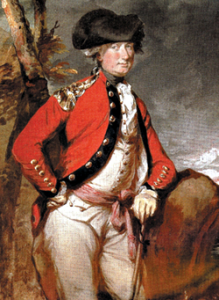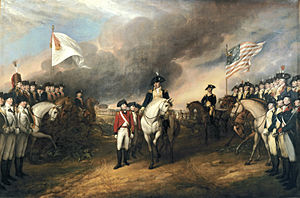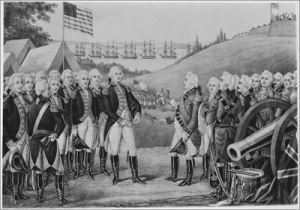Charles Lord Cornwallis
 |
— |
|
Daniel Gardner, early 1780s |
Though he probably is known best as the British general who lost the American colonies, Lord Charles Cornwallis was actually quite a remarkable man. An educated aristocrat with military and political experience, Lord Cornwallis served King George III and Britain as one of the leading generals of the Revolutionary War, where he proved himself as a gifted strategist. He was forced to surrender his troops in 1781 to American and French forces at the Siege of Yorktown, which essentially ended the American Revolution. But that did not break his spirit or his reputation. General Cornwallis went on to serve as governor in Ireland and India, where he made significant reforms.
Cornwallis assumed leadership of the British campaign in the south in 1780. When garnering the support of southern Loyalists failed to supply adequate troops, Cornwallis encouraged enslaved African Americans to leave their masters and help the British cause.
The new commander of the Continental forces in the south, General Nathanael Greene, was defeated by Cornwallis’ troops at Guilford Courthouse in March of 1781. But this victory came at great cost to Cornwallis’ army. With his troops exhausted and depleted of men and supplies, Cornwallis decided to move to Virginia to regroup and await reinforcements promised by Clinton.
| — |  |
| Surrender of Cornwallis John Trumbull – 1820 |
In Virginia, the Marquis deLafayette, in command of a small detachment of American troops, shadowed Cornwallis’ army and gathered reinforcements in early summer 1781. Clinton sent orders to Cornwallis to secure an ice-free base for naval operations in Virginia where the British fleet would have year-round access. Cornwallis, unhappy with the width of the waterways in Portsmouth, decided to fortify in Yorktown and thus placed his troops in a position of entrapment.
Following an inconclusive engagement between a British fleet from New York and a French fleet under Admiral de Grasse, the British withdrew to New York leaving the French naval force with control of the Chesapeake Bay. Cornwallis now found his army cut off from supplies and surrounded by American and French armies who had marched down from New York. Following a three-week siege and a failed attempt to flee across the York River to Gloucester, Cornwallis was forced to surrender on October 19,
1781. The Battle of Yorktown was the last significant battle of the Revolutionary War, and Cornwallis became known as the general who lost the American colonies.

Surrender of Cornwallis at Yorktown, Virginia, October 19, 1781, by which over 7,000 British and Hessians became prisoners, copy of lithograph by James Baillie, circa 1845, 1931 – 1932
